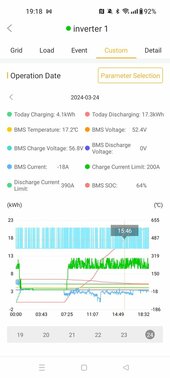@houseofancients
As always, thank you for your suggestions.

Are you recommending based on what you're seeing on the new firmware from JK-BMS, or from the independent project that's developing this, or both?
Because if it's the former, I don't have the new JK-BMS, I have old ones (still new in the box and yet to be installed) which don't support the new firmware. I'd need to sell the ones I have and buy new ones to implement the new JK-BMS/firmware.
And I thought we just agreed that new firmware was too new to trust.
Either way I'm completely open to being wrong, could you please point me in the direction of the posts or information you're seeing that this is a great option to implement? I've read hundreds of posts on this and I'm apparently not seeing what you are. Much appreciated!



